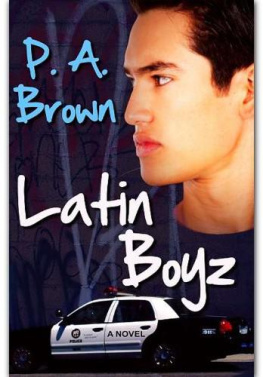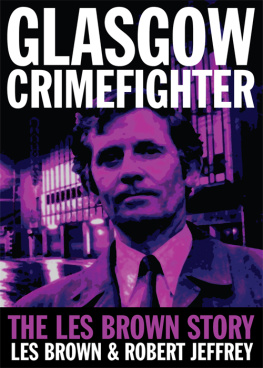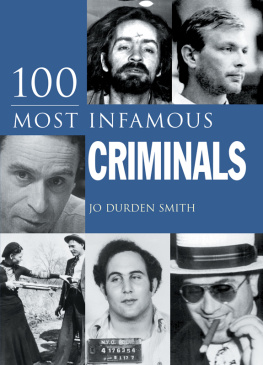SECRET PARTNERS
SECRET PARTNERS

Big Tom Brown and the Barker Gang
TIM MAHONEY

2013 by the Minnesota Historical Society. All rights reserved.
No part of this book may be used or reproduced in any manner whatsoever without written permission, except in the case of brief quotations embodied in critical articles and reviews. For information, write to the Minnesota Historical Society Press, 345 Kellogg Blvd. W., St. Paul, MN 55102-1906.
www.mhspress.org
The Minnesota Historical Society Press is a member of the Association of American University Presses.
Manufactured in the United States of America
10 9 8 7 6 5 4 3 2 1
 The paper used in this publication meets the minimum requirements of the American National Standard for Information SciencesPermanence for Printed Library Materials, ANSI Z39.481984.
The paper used in this publication meets the minimum requirements of the American National Standard for Information SciencesPermanence for Printed Library Materials, ANSI Z39.481984.
International Standard Book Number
ISBN: 978-0-87351-904-5 (paper)
ISBN: 978-0-87351-905-2 (e-book)
Library of Congress Cataloging-in-Publication Data
Mahoney, Timothy R., 1953
Secret partners : Big Tom Brown and the Barker gang / Tim Mahoney.
pages cm
Includes bibliographical references.
ISBN 978-0-87351-904-5 (pbk. : alk. paper) ISBN 978-0-87351-905-2 (e-book)
1. Police corruptionMinnesotaSaint Paul. I. Title.
HV7936.c85M34 2013
364.1092dc23
[B]
2013016071
Photos pages 3, 18, 38 from Minnesota Historical Society collections. All others courtesy St. Paul Pioneer Press .
This and other Minnesota Historical Society Press books are available from popular e-book vendors.
SECRET PARTNERS

HISTORYS SHADOWS
Among the most dangerous criminals of the public enemies era was a man who has long hidden in historys shadows: Big Tom Brown. In the early 1930s, while police chief of St. Paul, Minnesota, Brown became a secret partner of the infamous Ma Barker gang. He helped plan the gangs kidnappings and profited from their bank robberies, even as they gunned down cops and citizens in his hometown. He teamed up with a corrupt prosecutor to railroad men to prison, he beat confessions out of prisoners, and he was suspected by some of engineering two execution slayings.
Yet justice never caught up to Tom Brown. An overwhelming volume of evidence points to Browns involvement in illegal activities throughout his tenure as a policeman. But because of decisions made in St. Paul and Washington, Brown was never prosecuted for his crimes and the evidence was tested only at a civil service hearing, and not in court. The investigation of Brown never reached whatever allies he had among the citys elite.

Tom Brown, in a photo retouched for use in the Pioneer Press , about 1934.
The Barker gangs stalwarts, Fred Barker and Alvin Karpis, led a bumbling band of hillbilly burglars until they moved to St. Paul during Browns tenure as police chief. In the Ozarks, My life in crime was minor league stuff, admitted Karpis. But under the protection of Tom Brown, and the tutelage of St. Pauls master criminals, his gang evolved into notorious and feared public enemies. Soon Karpis was pulling his first genuine major league stickup, at a Minneapolis bank.
Barker gangster Volney Davis confessed to the FBI that without the protection of Tom Brown, the gang would have all been caught in St. Paul. Edna Murray, the Kissing Bandit, told the FBI that if not for Tom Brown and James Crumley of the St. Paul police, the gangs most infamous crime could not have been successfully accomplished and certain members of this [Barker] mob would have been in jail a long time ago.
Had the Barker gang never come under Browns protection, Ma Barker might have died lonesome in the Ozarks, an impoverished, obscure widow. Her son Fred and his pal Karpis would likely have been executed in Missouri before the nation knew who they were. The vicious killer Doc Barker would have remained in prison until he was an old man. At least seven murders and two grievous woundings might never have happened.
But Browns dark influence spread beyond the Barker gang. If not for the corrupt police force that crystallized during Browns tenure, the legend of John Dillinger might have ended on an Easter weekend in a snowy St. Paul parking lot. The Lady in Red would have been just another immigrant with visa troubles. No trap would have been set for Dillinger outside the Biograph theater. Newsreel hero Melvin Purvis might have retired as just another FBI functionary. Little Bohemia would be just another rustic Wisconsin resort, and not the site of a legendary FBI fiasco.
Many of Tom Browns fellow gangsters were shot dead, while others were locked up in Leavenworth or Alcatraz. But Brown proved to be the Houdini of gangster-cops. He outsmarted J. Edgar Hoover and the FBI, retiring to collect his police pension and run a tavern in the north country. Despite all the blood on his conscience, all the families whose lives he devastated, and all the dark money he collected, he never spent a night behind bars.

EVERYTHING COULD BE FIXED
Police corruption in St. Paul didnt start with Tom Brown. The so-called OConnor System had been the rule for decades before he became chief.
While the modern Twin Cities may be known for civility and culture, at the dawn of the twentieth century they were wild boomtowns. Fortunes were made in railroads, timber, grain, and iron ore. Minneapolis was born at the Falls of St. Anthony, which provided hydropower for mills and factories. Grain and lumber mills arose at the falls, but steamboats could not reach them; the river was too shallow. So the last navigable landing on the Mississippi developed into a separate city. Everything and everyone that steamed upriver had to transfer to the rails at St. Paul. As America moved west, the river port of St. Paul prospered.

St. Pauls Seven Corners in the 1930s, looking east along Seventh Street.
Americans and foreigners alike bundled up against the frosty climate and came seeking their fortunes. The inevitable gambling dens, saloons, and brothels followed. The city fathers, having no objection to a good time, appointed a police chief known for his tolerance of vice.
He was John J. OConnor, and he built a corrupt machine that eventually bore his name. OConnor was police chief for most of the years between 1900 and 1920. His father, an Irish immigrant, was a St. Paul ward heeler. His brother Richard, the Cardinal, rose to be a top Democrat whose byzantine connections snaked all the way to Tammany Hall.
The Cardinal understood that Americans were hypocrites who publicly deplored vices they secretly enjoyed. This notion figured into the economics of St. Paul: The small town merchant was snowed in all winter, Richard OConnor wrote, and in the spring when he came to town to buy his stock of merchandise, he was hungry for a good time, which consisted of drinking good whiskey and playing around with the girls in the sporting houses.















 The paper used in this publication meets the minimum requirements of the American National Standard for Information SciencesPermanence for Printed Library Materials, ANSI Z39.481984.
The paper used in this publication meets the minimum requirements of the American National Standard for Information SciencesPermanence for Printed Library Materials, ANSI Z39.481984.
